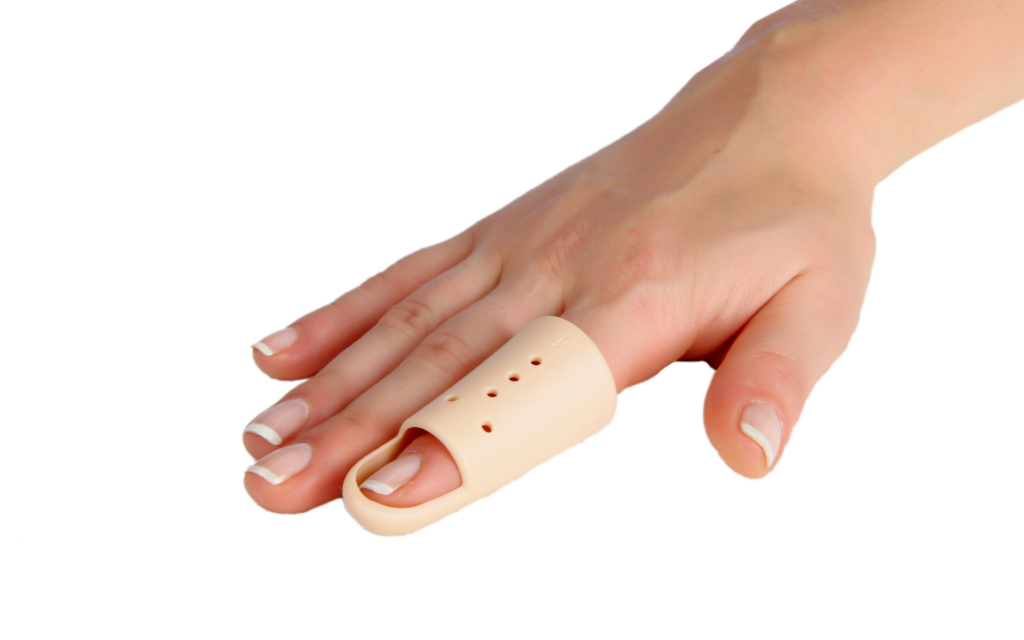Trigger fingers surface as a common yet complex concern in the broad area of hand health, necessitating careful consideration and customised interventions. This article looks into the crucial question of when one should use surgery, injections, or splints. Understanding trigger finger causes, symptoms, and available treatments is essential to managing the condition’s subtleties.
From the details of conservative approaches like splinting to the precision of minimally invasive interventions such as injections, and the last-resort considerations of surgery, this journey aims to guide patients and practitioners alike through the labyrinth of choices, ensuring a harmonious blend of effective care and patient well-being. As we navigate the intricacies of trigger finger treatment, the orchestration of splinting, injecting, and operating unfolds as a symphony, harmonising the delicate balance between tradition and innovation in the pursuit of optimal hand health.
Causes of Trigger Finger
Trigger finger, scientifically known as stenosing tenosynovitis, is a multifaceted condition orchestrated by a variety of contributing factors. At the heart of this intricate symphony lies a combination of elements that converge to instigate the inflammation of tendons within the affected finger.
First, repetitive hand movements play a central role in triggering this ailment. Occupations or activities demanding frequent, forceful grasping or the prolonged use of vibrating tools can set the stage for the development of trigger finger. The relentless repetition of these motions places undue stress on the tendons, gradually leading to irritation and inflammation.
Moreover, gripping activities add another layer to the composition of trigger finger causes. Individuals engaged in activities that involve sustained gripping, such as using tools or playing certain musical instruments, may find themselves susceptible to this condition. The persistent pressure on the finger’s tendons during gripping motions contributes to the inflammation that characterises trigger finger.
In a more somber note, medical conditions such as rheumatoid arthritis introduce a discordant element to the symphony of trigger finger causes. The autoimmune nature of rheumatoid arthritis can lead to inflammation not only in the joints but also in the tendons of the fingers. This systemic involvement amplifies the risk of trigger finger, creating a complex harmony of factors that clinicians must navigate when unraveling the roots of this condition.
Relating trigger finger to a symphony of underlying causes helps patients and medical professionals recognise the complexity of this hand condition. Through the identification and resolution of all contributing factors, a comprehensive and harmonious treatment plan can be formulated, facilitating the healing process and regaining the affected finger’s range of motion.
Symptoms of Trigger Finger
Identifying the symptoms of trigger finger in their early stages is a pivotal aspect of effective management. As the curtains rise on this intricate performance, patients become attuned to a spectrum of sensations that serve as the telltale signs of this common hand ailment.
A distinctive overture to trigger finger symptoms is the experience of a popping or clicking sensation during the movement of the affected finger. This audible cue often signifies the inflammation and constriction of the tendons as they navigate the affected sheath. It becomes a sensory beacon, alerting individuals to the underlying issue and prompting them to seek timely medical attention.
Accompanying this auditory revelation is the palpable presence of tenderness and swelling—a duet of discomfort that envelops the affected finger. The tender touch and visible swelling, signaling the inflammation that characterises trigger finger and urging patients to delve deeper into understanding the root cause.
In a more dramatic turn, the affected finger may assume a locked position. This bending of the finger, refusing to yield to attempts at straightening, creates a poignant tableau of the challenges posed by trigger finger. The ensuing difficulty in performing routine movements underscores the urgency of intervention, emphasising the need for early detection and comprehensive management to unravel the complexities of this digital symphony.
As patients attune themselves to these nuanced cues, the collective symphony of symptoms becomes a guide, directing them towards proactive healthcare and a harmonious resolution to the challenges posed by trigger finger.
As individuals embark on the journey of addressing trigger finger, navigating the labyrinth of treatment options is crucial, with the initial steps guided by conservative measures that lay the foundation for effective management.
Conservative Treatments
When it comes to trigger finger management, the initial steps often find their foundation in conservative treatments, offering a measured and non-invasive approach to alleviating discomfort and restoring hand function. Below are conservative treatments available for those suffering from trigger finger:
Anti-inflammatory Medicines
For many, the first chapter of relief unfolds with the aid of anti-inflammatory medications. These medications serve as the healing notes, orchestrating a reduction in swelling and alleviating the discomfort synonymous with trigger finger. By targeting the inflammation at its source, these medicines provide a soothing melody, offering respite to individuals grappling with the symptoms of this digital ailment.
Finger Splints
Enter the world of finger splints, a non-invasive solace embraced by many seeking reprieve from trigger finger’s grip. These devices, varying in design and size, act as the supporting cast, aiming to provide stability and immobilisation to the affected finger. Yet, like characters in a narrative, the efficacy of splints hinges on proper usage and adherence to recommended guidelines. Understanding the nuances of when splinting works best and acknowledging instances where it might fall short is imperative. This recognition becomes a guiding motif, managing expectations and guiding patients through the intricate dance of trigger finger treatment.
Stretching Exercises
Adding depth to this therapeutic narrative, pairing splinting with targeted stretching exercises becomes a harmonious blend. These exercises enhance the treatment regimen by offering gentle, controlled stretches. The choreography unfolds as these stretches improve flexibility, mitigating the constriction causing trigger finger symptoms. It’s a holistic approach, combining the stabilising force of splints with the fluidity introduced by stretching exercises, creating a symphony of care that resonates with the diverse needs of those navigating the complexities of trigger finger treatment.
Minimally Invasive Treatments
The discussion of minimally invasive interventions opens a critical chapter as we move deeper into the treatment of trigger finger. Patients seek comfort in novel approaches that emphasise accuracy, efficacy, and a quicker recovery process in this complex environment.
Coreflex Injections
In the spectrum of minimally invasive treatments for trigger finger, the spotlight falls on Coreflex Injections. These injections epitomise precision, offering targeted relief without the need for traditional surgical interventions.
Coreflex Injections can address the constricted tendon sheath—the core catalyst behind trigger finger symptoms. The precision of these injections lies in their ability to target the affected area directly, mitigating inflammation and restoring normal function.
The methodology behind Coreflex Injections involves introducing a carefully formulated solution into the affected tendon sheath. This solution combined muscle relaxant, local anaesthesia, and anti-inflammatory solution, to alleviate the constriction causing trigger finger symptoms. The minimally invasive nature of this procedure means less trauma to surrounding tissues, reducing the risk of complications and expediting the recovery process.
Benefits of Coreflex Injections
The benefits of Coreflex injections extend far beyond their minimally invasive nature. Patients undergoing this treatment often experience rapid relief from the symptoms that encumbered their hand function. The efficiency of Coreflex injections becomes a beacon of optimism, illuminating a path toward regained normalcy in hand mobility without the protracted downtime often linked to more invasive procedures.
When Should You See a Pain Doctor for Trigger Finger?
Prompt medical attention assumes paramount importance, particularly when conservative measures fail to yield the expected improvement. Consulting a Pain Doctor becomes an imperative step in the journey toward effective trigger finger management. A comprehensive evaluation and a tailored treatment plan are the keystones of this collaborative approach to care.
When to Operate?
Surgery, although an option, remains a last resort—a final chapter in the trigger finger treatment narrative. Reserved for cases where minimally invasive treatments prove ineffective, surgery should be approached with cautious consideration. Recognising that surgery isn’t the sole solution underscores the importance of exploring less invasive options first. This judicious approach ensures a comprehensive and effective strategy in the intricate dance of trigger finger management, prioritising patient well-being and optimising outcomes.
Conclusion
Knowing when to splint, inject, or consider surgery is critical when it comes up to trigger finger management. A sophisticated strategy is needed to overcome this terrain, with an emphasis on minimally invasive interventions that put the needs of the patient and speedy recovery first. As we learn more about the intricacies of trigger finger, the combination of traditional and minimally invasive treatments becomes evident as the lighthouse directing patients toward the best possible hand health.






